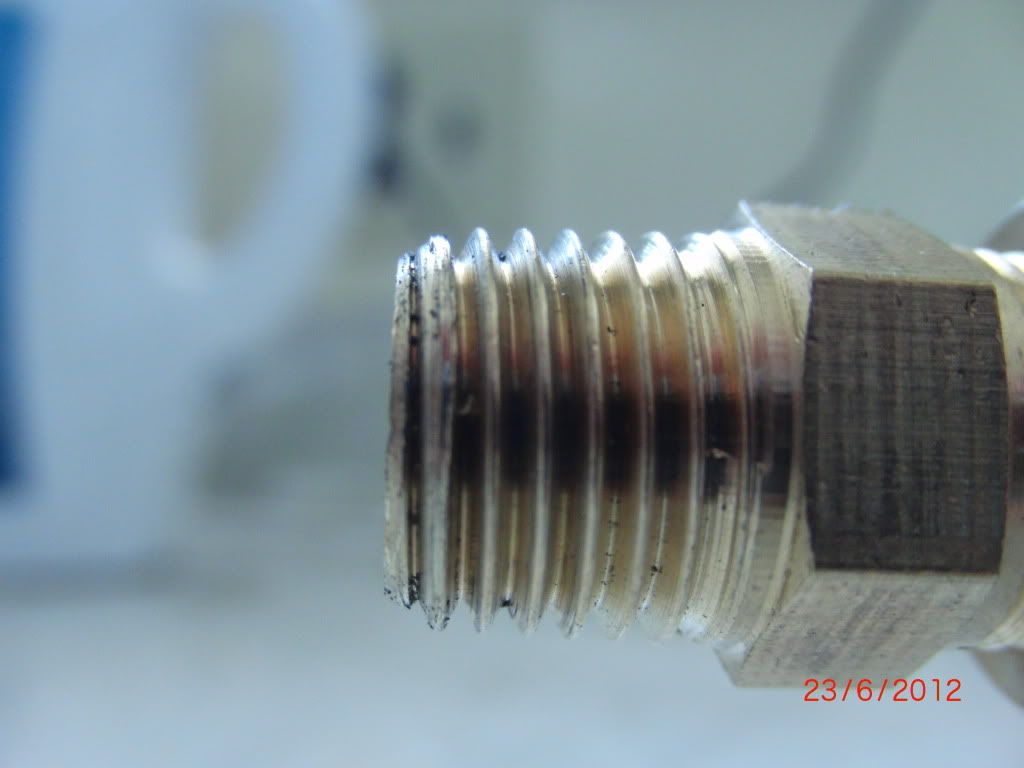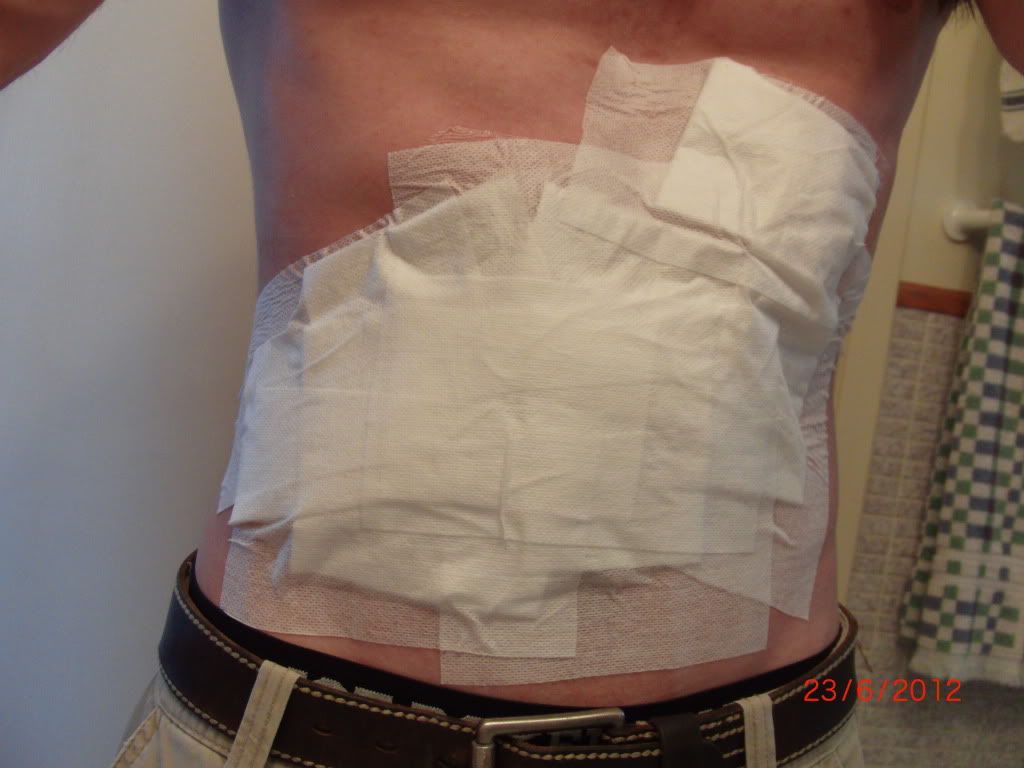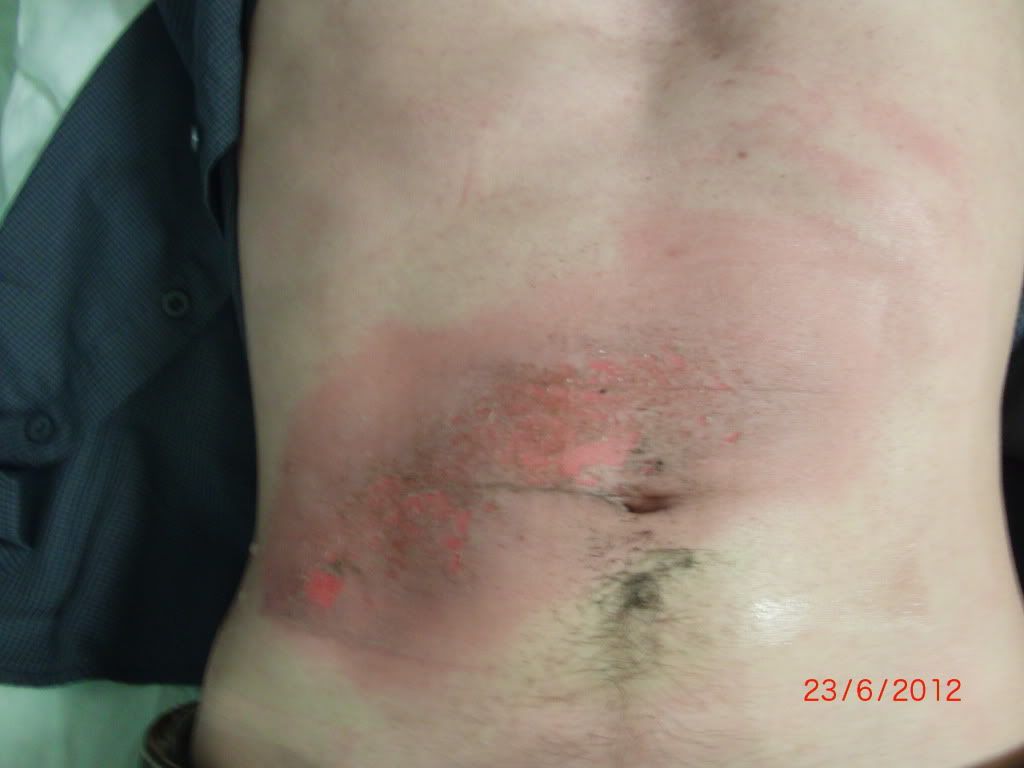New Failure Mode in Combustion Cannons
Posted: Sat Jun 23, 2012 10:41 am
I recently built a 1X combustion gun following the chamber layout of BigBang's "Crusader" (single ignition point at back of chamber, fan immediately after) for recreational use.
The fuel meter was plumbed into the front of the chamber through a double-thickness wall with a 1/8" NPT hex nipple, which was followed by a 1/8" -> 1/4" bushing, a 1/4" 90° elbow, a 1/4" hex nipple, and then the first ball valve for the fuel meter. The meter assembly was fairly standard, and clamped onto the wall of the chamber with two large hose clamps (with a spacer to keep the meter roughly parallel to the chamber).
The problem arose as the result of a shortcut I took during the initial assembly and testing phase combined with a low quality hex nipple. Seeing as how nothing between the ball valve and the chamber would be pressurized, except during the shot, I neglected to apply PTFE tape and tighten the nipple fully into the elbow to ease disassembly (the nipple was engaged four turns into the elbow).
The gun had been tested remotely six times with a rag jammed very tightly into the breech (needed to be knocked in with a hammer). I'd resorted to high friction rather than a heavy projectile due to laziness, and convinced myself of the safety of the launcher without fully comprehensive testing.
Yesterday, my assistant and I set out to a suitable outdoor test location in kayaks. We got there without incident, set up the launcher, loaded a potato, injected the fuel, turned on the fan, and pointed it out over the water. Instead of the heavy recoil I was bracing for, I was rewarded with a sharp punch to the gut, and the immediate realization that it was going to be a long, painful trip home. The 1/4" hex nipple had torn completely out of the elbow, knocking the entire meter pipe back by an inch or so. The resulting gas jet (consisting of the entire 5L chamber volume) sprayed across my belly, causing deep second degree burns in places and a first degree burn over the remainder, totaling ~3% of my body surface area. Not at all threatening, but quite annoying.
To add insult to injury, the sharp pressure drop behind the projectile caused the air pressure built up ahead of it to fire it back into the chamber, utterly destroying the fan. As of yet, I don't know if the endcap will need to be replaced.
RECOMMENDATIONS:
-Perform remote tests with all projectiles likely to be used, as well as closed chamber tests before handheld use.
-Where possible, perform tests above with oxygen enrichment aiming for 120% operational chamber pressure.
-Always wear gloves and at least a long-sleeved shirt while operating combustion launchers
-Design launcher so as to point chamber ports away from operator
The pictures below include one of a minor burn injury. Don't scroll down any further if you're pathetically squeamish.
Stripped thread on pipe nipple

Burn with dressing:

Burn without dressing, 1 day later (apologies for the quality, the low light required exposure long enough that a tripod should have been used):

The fuel meter was plumbed into the front of the chamber through a double-thickness wall with a 1/8" NPT hex nipple, which was followed by a 1/8" -> 1/4" bushing, a 1/4" 90° elbow, a 1/4" hex nipple, and then the first ball valve for the fuel meter. The meter assembly was fairly standard, and clamped onto the wall of the chamber with two large hose clamps (with a spacer to keep the meter roughly parallel to the chamber).
The problem arose as the result of a shortcut I took during the initial assembly and testing phase combined with a low quality hex nipple. Seeing as how nothing between the ball valve and the chamber would be pressurized, except during the shot, I neglected to apply PTFE tape and tighten the nipple fully into the elbow to ease disassembly (the nipple was engaged four turns into the elbow).
The gun had been tested remotely six times with a rag jammed very tightly into the breech (needed to be knocked in with a hammer). I'd resorted to high friction rather than a heavy projectile due to laziness, and convinced myself of the safety of the launcher without fully comprehensive testing.
Yesterday, my assistant and I set out to a suitable outdoor test location in kayaks. We got there without incident, set up the launcher, loaded a potato, injected the fuel, turned on the fan, and pointed it out over the water. Instead of the heavy recoil I was bracing for, I was rewarded with a sharp punch to the gut, and the immediate realization that it was going to be a long, painful trip home. The 1/4" hex nipple had torn completely out of the elbow, knocking the entire meter pipe back by an inch or so. The resulting gas jet (consisting of the entire 5L chamber volume) sprayed across my belly, causing deep second degree burns in places and a first degree burn over the remainder, totaling ~3% of my body surface area. Not at all threatening, but quite annoying.
To add insult to injury, the sharp pressure drop behind the projectile caused the air pressure built up ahead of it to fire it back into the chamber, utterly destroying the fan. As of yet, I don't know if the endcap will need to be replaced.
RECOMMENDATIONS:
-Perform remote tests with all projectiles likely to be used, as well as closed chamber tests before handheld use.
-Where possible, perform tests above with oxygen enrichment aiming for 120% operational chamber pressure.
-Always wear gloves and at least a long-sleeved shirt while operating combustion launchers
-Design launcher so as to point chamber ports away from operator
The pictures below include one of a minor burn injury. Don't scroll down any further if you're pathetically squeamish.
Stripped thread on pipe nipple

Burn with dressing:

Burn without dressing, 1 day later (apologies for the quality, the low light required exposure long enough that a tripod should have been used):
